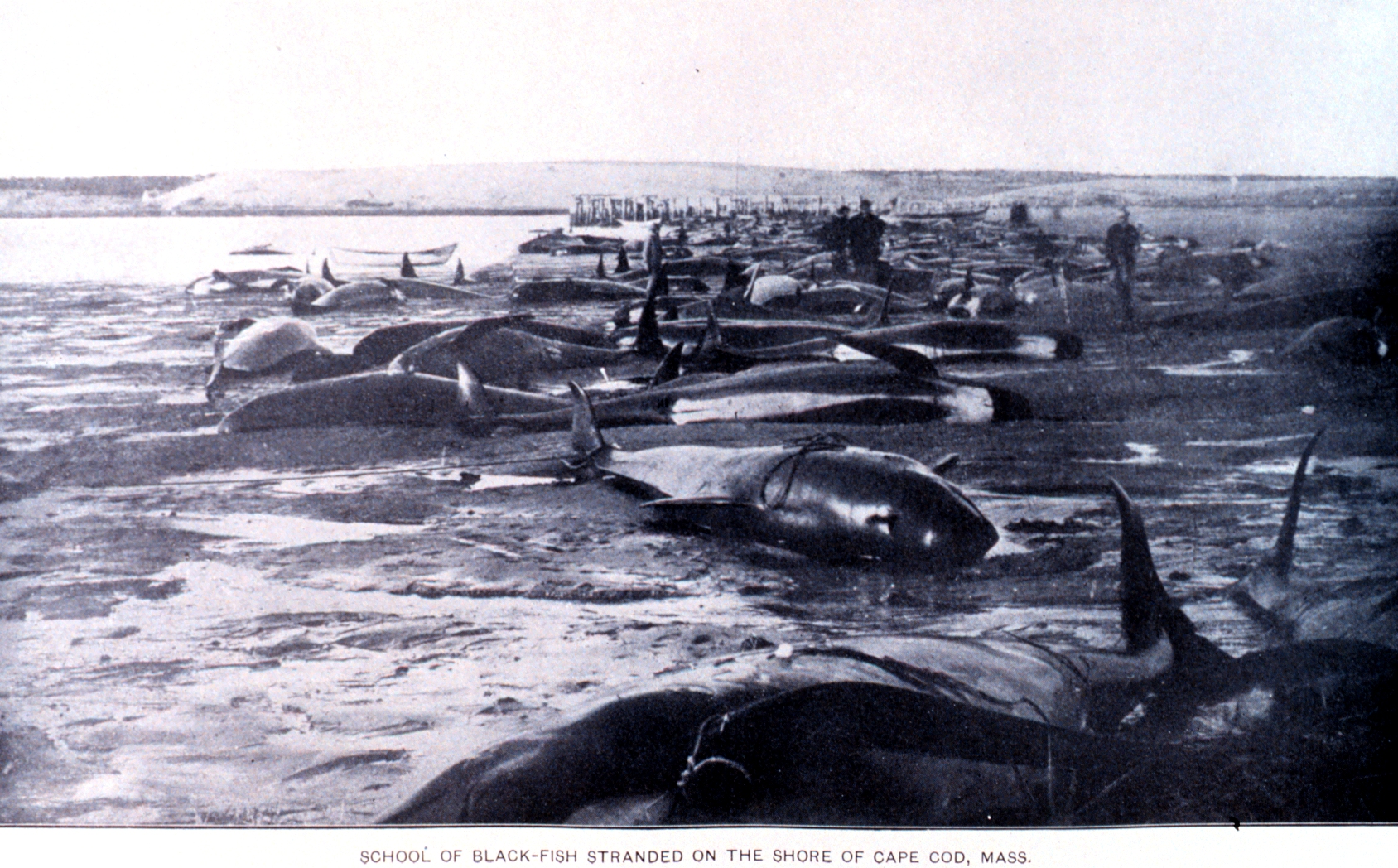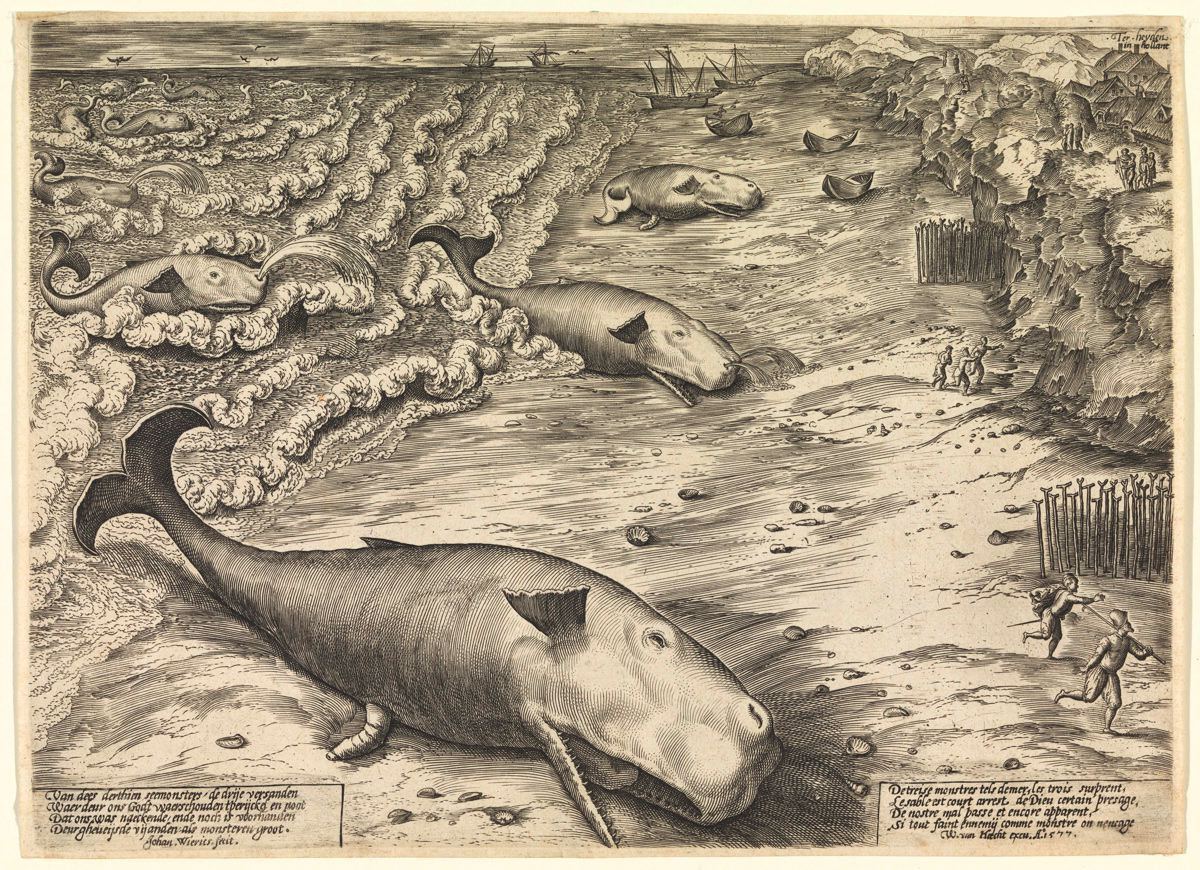

Species
Every year there may be beachings adding up to 2000 animals.[1] Although the majority of strandings will result in death, they pose no threat to the species as a whole. Of all of the species of cetaceans, only about 10 species are frequently involved in mass beachings, with a further 10 species rarely being involved. All of the frequently involved species are toothed whales (Odontocetes), meaning that none of the baleen whalesare regularly involved in beachings. These species share some characteristics which may explain why they beach. Body size does not normally affect the frequency, but both the animals' normal habitat and social organization do appear to influence their chances of coming ashore in large numbers. Odontocetes that normally inhabit deep waters and live in large, tightly knit groups are the most susceptible. They include the Sperm whale, a few species of Pilot and Orca whales, a few beaked whales and some oceanic dolphins. Solitary species are naturally excluded from mass strandings. Cetaceans that spend most of their time in shallow, coastal waters are almost never mass stranded, with porpoises being essentially immune.
...
"Follow-me" strandings
Another possibility is that a proportion of strandings may be caused by larger cetaceans following dolphins and porpoises into shallow coastal waters[citation needed]. The larger animals may be familiar with faster moving dolphins in their area and become habituated to following them. If an adverse combination of tidal flow and seabed topography is encountered, the larger species are at much higher risk of being trapped.
Sometimes it may work the other way. A recent example of this occurred when a local dolphin was followed out to open water by two Pygmy sperm whales that had become lost behind a sandbar at Mahia Beach, New Zealand.[6] The possibility of training dolphins to lead trapped whales out to sea is an intriguing one in areas where frequent mass strandings occur, such as New England or Florida.
An interesting observation is that pods of killer whales, predators of dolphins and porpoises, are very rarely stranded. There may be two explanations for this - firstly that heading for shallow waters may be a very effective anti-predator mechanism for dolphins and that the killer whales have learned not to take the risk, or else that the killer whales have learned how to operate in shallow waters, particularly in their pursuit of seals. The latter is certainly the case in Península Valdés, Argentina, where a particular pod of killer whales pursue seals up shelving gravel beaches to the edge of the littoral zone[citation needed]. The pursuing whales are occasionally partially thrust out of the sea by a combination of their own impetus and retreating water and have to wait for the next wave to take them back out.



Leave a comment